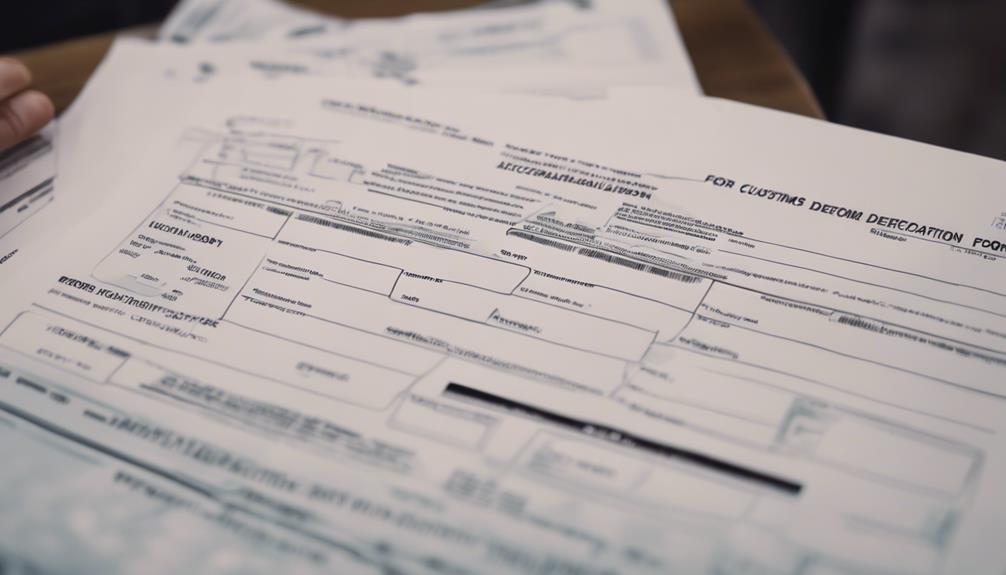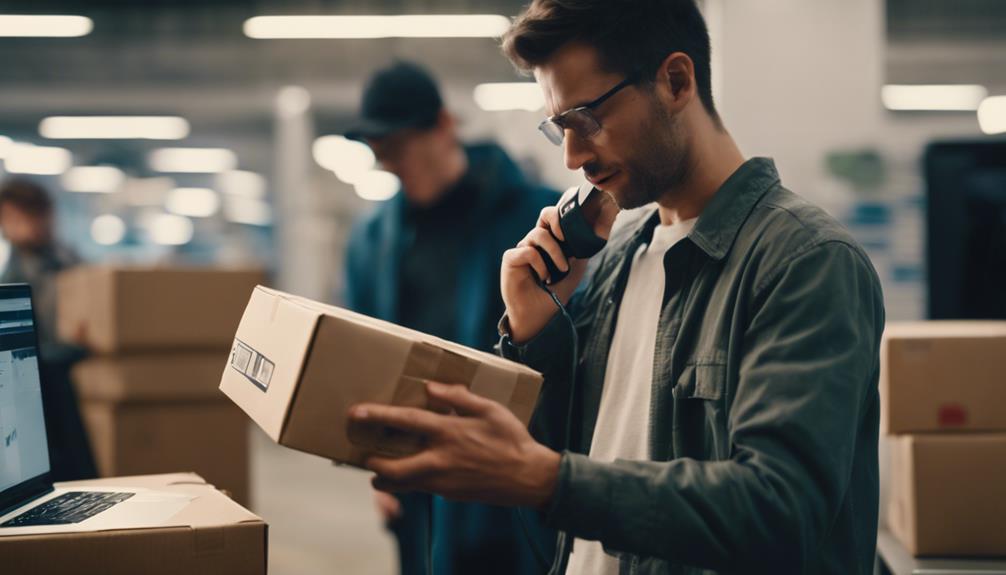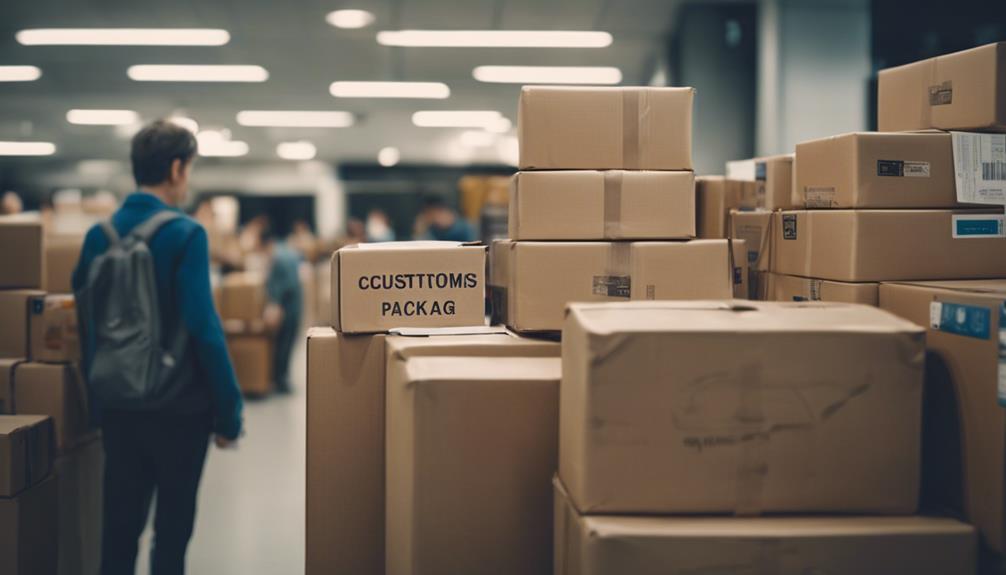When faced with customs holding your package, it is essential to grasp the reasons for the delay and take appropriate steps for swift clearance. Understanding customs regulations, ensuring accurate documentation, and promptly settling duties or taxes are critical. Tracking shipment progress, engaging with the carrier and seller, and staying proactive help navigate through sticky situations effectively. Timely payment of fees prevents further setbacks. By following these steps, you can enhance your chances of a smoother clearance process.
Key Takeaways
- Track shipment progress for updates.
- Contact customs broker for insights.
- Provide requested documents promptly.
- Communicate with carrier and seller.
Understanding Customs Hold Reasons

The comprehension of the underlying reasons for customs holds is essential for maneuvering through potential delays in package clearance efficiently and effectively.
Understanding customs regulations and import restrictions can help importers navigate the complexities of international shipping. Missing or incorrect paperwork can lead to delays as customs require accurate documentation for clearance.
Prohibited or restricted items are another common reason for packages being held, as they may violate import regulations. Undervaluation of goods can also trigger a customs hold, as authorities aim to prevent duty evasion.
Additionally, random inspections and backlogs in customs processing can cause unexpected delays. By familiarizing oneself with these reasons, importers can proactively address issues and expedite the clearance process.
Duration of Customs Holds
Understanding how long packages can be held by customs authorities is essential for importers managing international shipping processes. Customs regulations dictate the timeline for clearance, with factors like shipment tracking influencing the duration of holds. Here are key points to reflect upon:
- No Set Time Limit: Customs does not specify a fixed timeframe for holding packages.
- Common Delays: Minor issues typically lead to delays of 1-3 days.
- Average Clearance Time: Most shipments clear customs within 3-5 days.
- Potential for Extended Delays: Items violating regulations can result in holds lasting several weeks.
Steps for Package Clearance

Upon encountering a customs hold, the next essential step for importers is steering the process of package clearance, which involves several key actions to facilitate the release of the shipment.
Initially, customs officials will meticulously review all customs documentation to guarantee accuracy and completeness.
Subsequently, importers must promptly settle any outstanding duties or taxes applicable to their shipment.
Package inspection by customs may follow to verify that the contents align with the declared information. It is vital to anticipate potential bureaucratic delays post-inspection.
Finally, importers need to make necessary arrangements for the pickup or delivery of the package once it has been cleared by customs.
Dealing With Stuck Shipments
Maneuvering through customs holds for stuck shipments requires strategic communication and proactive engagement. When faced with a shipment delay, consider the following steps to navigate the customs clearance process effectively:
- Track Your Shipment: Use the provided tracking number to monitor the progress of your package through customs clearance.
- Contact the Customs Broker: Reach out to the customs broker handling your shipment for insights into the hold reason and potential resolution timelines.
- Provide Documentation Promptly: Respond promptly to any requests for additional documentation to expedite the clearance process.
- Stay Informed: Keep in touch with the carrier and stay informed about the status of your shipment to address any issues promptly.
Contacting Carrier and Seller

When facing customs holds, it is vital to promptly contact both the carrier and the seller for assistance and guidance.
The carrier can provide updates on the status of the shipment and any specific customs regulations that may be causing delays.
By reaching out to the seller, you can guarantee that all necessary shipping compliance requirements are being met, such as providing accurate documentation or resolving any issues related to the package.
Effective communication with both parties is essential in expediting the clearance process and addressing any potential issues that may arise.
Stay proactive in seeking assistance to navigate through customs holds smoothly.
Timely Duties and Fees Payment
Prompt payment of duties and fees is essential to prevent further delays in the customs clearance process. Importer responsibilities include ensuring timely settlement of any applicable charges to facilitate the release of the package.
Here are key steps to adhere to for smooth customs clearance:
- Review Customs Documentation: Double-check all paperwork for accuracy and completeness before processing payment.
- Understand Duty Calculations: Familiarize yourself with how duties and taxes are calculated based on the shipment's declared value and category.
- Payment Method: Choose a secure and efficient method to pay duties and fees to expedite the clearance process.
- Keep Records: Maintain detailed records of payments made and related customs documentation for future reference and potential audits.
Key Takeaways on Customs Holds

Understanding the key takeaways on customs holds is essential for managing potential shipment delays efficiently.
Adhering to customs regulations is vital to avoid issues such as missing paperwork, prohibited items, undervaluation, random inspections, and backlogs that may lead to packages being held.
Keeping track of shipment tracking information can help anticipate delays and take appropriate actions promptly.
On average, packages clear customs within 3-5 days, but certain factors like extended inspections or clearance processes for restricted items can prolong this duration.
It is recommended to stay informed about clearance requirements, maintain communication with carriers and sellers, pay any necessary fees promptly, and remain patient during the customs hold process to facilitate the resolution of shipment delays.
Conclusion
Steering through customs holds can be a challenging and uncertain experience for importers and exporters. Understanding the reasons behind these holds, the potential duration they may last, and the necessary steps for package clearance is essential.
By communicating with carriers, promptly paying any required duties or fees, and being patient, individuals can effectively address stuck shipments.
Taking proactive measures and staying informed are key to successfully resolving customs holds.

Oliver Postman was born and raised in a small town in the Midwest, where his fascination with postage began at an early age. At just six years old, he stumbled upon a box of old stamps in his grandfather’s attic, igniting a passion that would shape his life.

